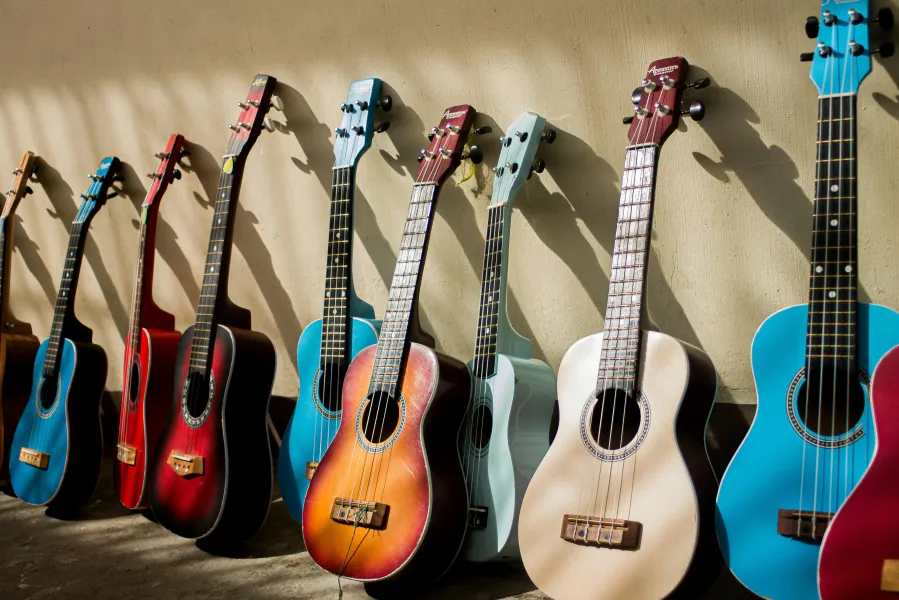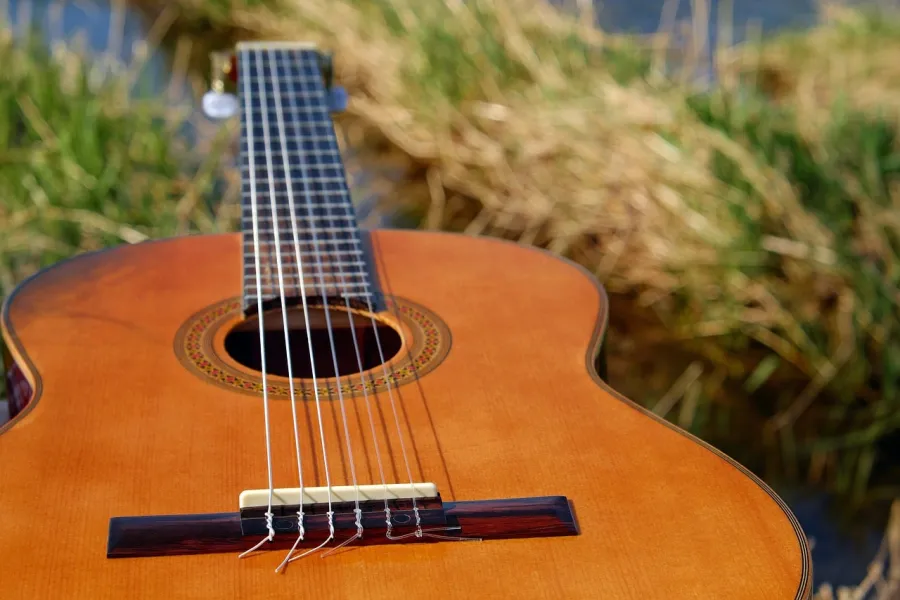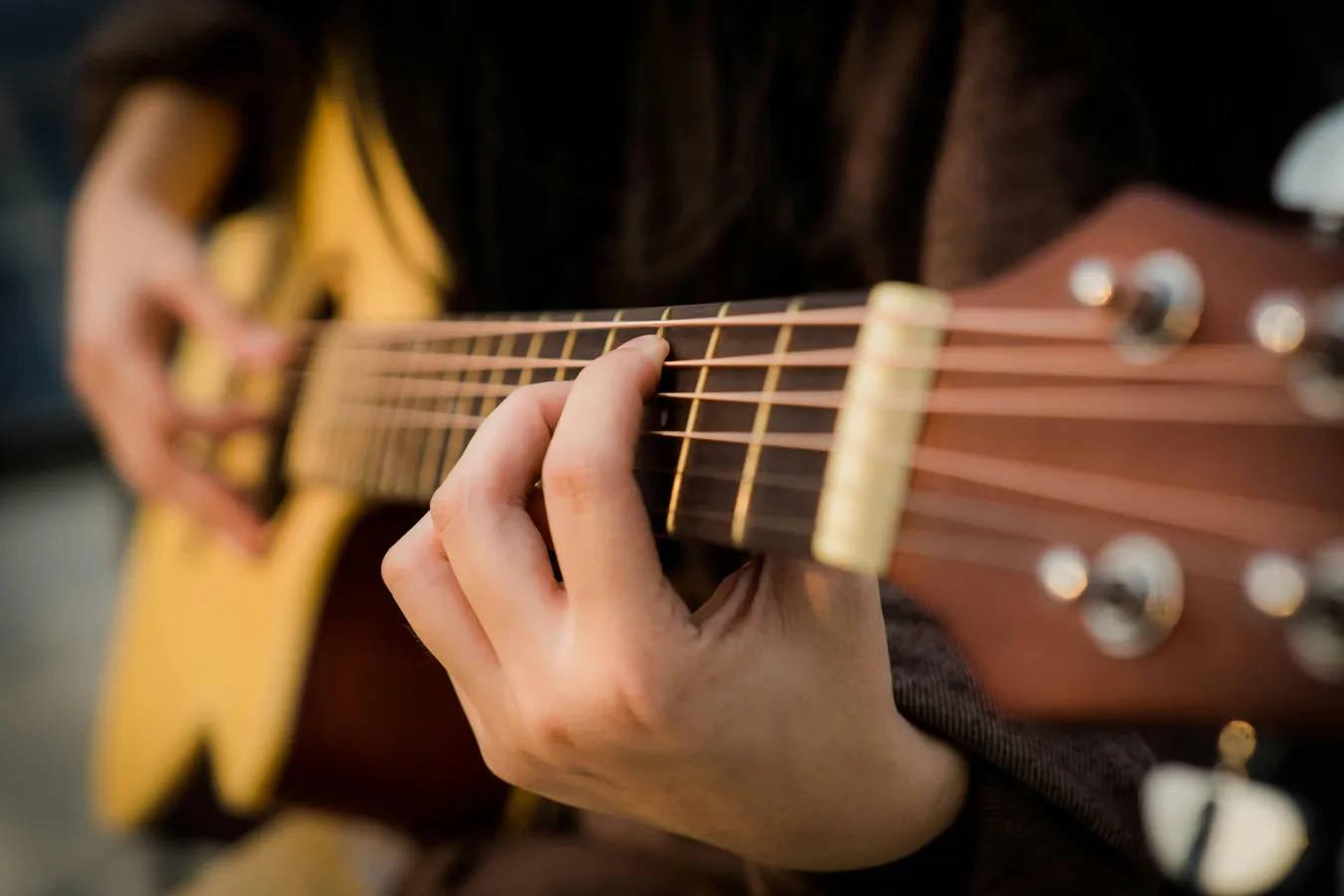The guitar is one of the most popular musical instruments in the world, with a variety of types, from meditative Chillout to oral mat-material, sometimes used in borderline musical directions.
The creation of the electronic guitar had a great influence on the development of music-together with this, it led to the creation of many new genres. The sound of this instrument can be organically recorded both in classical composition and in an experimental, alternative direction melody. With such popularity, it is not surprising that many people wonder: Can you learn to play the guitar yourself? The answer to this question is simple and short: yes, and this is true. In this article, we will look at the main stages of this path and try to understand how to learn to play the guitar from scratch at home.
As a rule, the desire to learn to play the guitar comes to a person after listening to impressive guitar compositions performed by a professional musician. Sometimes such an impulse becomes a fleeting illusion, but in some cases the idea settles on the head for a long time and does not give peace. If this happened to you – congratulations, for effective independent learning, a desire will first be needed, and it already exists in you. It is very difficult to master the tool at a professional level, it requires a lot of effort, self-education and time spent.
However, for many, it is enough to play a few favorite songs with your loved ones, and this level can be achieved through two to three months of targeted training. Remember, no virtuoso has come to the world knowing how to play the guitar from the cradle, behind the external convenience of performing masterfully lies a long practice. When a beginner musician learns to play the guitar using basic chords and techniques, he will be able to feel his progress and, if desired, continue.
Even if there are unsuccessful attempts to learn to play the guitar, you should not give up. Perseverance and perseverance will help you overcome difficulties and achieve the desired progress, even if at the beginning it seems unattainable.
Learning to play guitar from scratch

So, we will analyze what it takes for a beginner guitarist to start reading:
- Guitar. You can learn theoretical material as much as you like, but it does not allow you to master the guitar, since an important part of the reliable performance of a musical composition is based on muscle memory. At first, you can borrow or rent the tool from a friend, but after making sure you don't give up the lesson, you need to find your own tool.
- Motivation. A sudden passion and even a constant desire lasting several months can subside under the usual oppression. To continue your daily activities, you need to have an incentive that allows you to continue your studies. Pay attention to your own progress, even small achievements in the selected area can significantly inspire you.
- Time. There is no clear answer to the question" how long does it take to learn to play the guitar", which largely depends on your goals. It is possible to learn the basic principles of obtaining sound, master the basics of tuning the instrument and learn how to play simple music in two to three weeks. In order to master the chords and play a complete composition, you will need to practice for several months. Well, on an amateur level, a year of practical training is required to reliably master the skill of playing the guitar. Of course, with the participation of an experienced coach, the learning process will be more alive, so you can avoid many common mistakes and improve your skills faster.
- Tutorials. For independent learning, you need educational materials: theory books, sets of basic chords, training videos prepared by experienced musicians. There are many channels on the network in the corresponding topic, choose the one you like. It will not be superfluous to revise the live performances of your favorite performers, so you can combine business with pleasure.
The effectiveness of learning and the speed at which muscle memory is triggered largely depend on the frequency of classes. Long-term exercises several times a week are less common, but will not be more useful than daily exercises. It is not recommended to practice for too long at the beginning of the session, because for an unusual person, playing a guitar for a long time can cause painful sensations in tired fingers. This can be avoided with a classic guitar with soft nylon strings, but it should be borne in mind that they have a calmer sound.
Types of guitars
Currently, there are many types of guitars that are used in different genres of music. To simplify classification, its mixed method is used, in which the following main groups of tools can be distinguished:
- An acoustic guitar is a musical instrument whose hollow body serves as a resonator. In most cases, such guitars are often fitted with metal strings made of bronze alloys. A separate subspecies may also be included in this group – classical guitars, which are distinguished by their slightly shortened body, wider neck and nylon strings. The sound of such instruments largely depends on the size of the body and the types of wood from which it is made.
- Electric guitars have a small body without gaps inside, and sound amplification on such instruments is carried out using a built-in pickup that removes the vibration of the strings. In the near future, the signal will pass through various equipment, such as processors and amplifiers, after which the sound will be output to the speakers. Electric guitars are common in many music genres and are available in a wide variety on the market.

- Semi-acoustic guitar is a hybrid of the previous two types and combines their characteristics. The main design difference between a semi-acoustic guitar and an electric guitar is a completely or partially hollow body. Such a tool can produce a decent sound without an amplifier, but during processing, the sound becomes more saturated.
- Electroacoustic guitar is an acoustic option, but the pickup is installed, which practically does not change the sound characteristics and serves to increase the volume, which is convenient when playing for a large audience. Most modern electroacoustic guitars, in addition to the pickup, are equipped with a tembroblock that serves to amplify the received signal. This module complements the built-in Equalizer, which is often used to adjust the volume and all.
- Bass guitar has a low sound ranges, such an instrument can be acoustic or electronic. As a rule, the bass guitar is used in Group Performance, where this tool helps to form the foundation of sound and gives volume and depth to the composition. Four-string bass guitars are the most common, but there are also twelve-string instruments.
In addition to the main common types of guitars, there are other types that are not common. It should be borne in mind that each type of instrument takes its place in music and cannot be universal. For beginner guitarists, it is recommended to choose an acoustic guitar, which will help to master the basics of this art.

How to learn to play the guitar for new learners
When mastering the skill of playing the guitar, it is necessary to rely on the existing principles, without the use of which development will be significantly more difficult, even impossible. Finger misalignment or guitar misalignment may become a habit and then you will need to reread.
It is best to exercise while sitting, stand in a comfortable position, keep your back straight, relax your shoulders. In the classic case, if you use more of your right hand, place the concave part of the guitar on your left thigh. For more users of the left hand, respectively, this position will be opposite the window. This is the most natural case from an anatomical point of view, in which the tension of the back and forearms is minimized. Under the foot on which the guitar rests, you can put a small stand with a height of 15-20 cm.
A classic position is not necessary to play the guitar, for this you need to overcome yourself. If it is convenient for you to play in a position that is different from the generally accepted one, then it is worth using the position that is most convenient for you. The main thing is that the location is natural and can minimize stress on the back, shoulders and arms, thereby reducing the effect of fatigue. The guitar should be held at an angle of about 45 degrees relative to the floor, in which case it will be easier for the brush to move around the neck.
During the playing of the guitar, many ligaments and muscles are involved, the main load falls on the fingers. For this reason, it will not be superfluous to warm up a little before classes, which is especially important for beginner guitarists.
- Try to squeeze and open your fingers tightly with your fist for 2-3 minutes, this will crush the ligaments and improve blood flow to the muscles of the hands.
- Work with a soft resistance band or small rubber ball to develop the finger muscles and develop their joints.
- Squeeze your fingers into a fist and move your hands in a circle, such an exercise will warm up the muscles of the wrist, improve blood flow and crush the ligaments.
Please note that even with regular warm-up, it is highly likely that at first you will not be able to avoid painful sensations. The unusual load on joints, ligaments and muscles will be quite tiring at first. In addition, the pressure of the strings on the fingertips during prolonged exercises can also be unpleasant. However, if you do not back down and continue practicing, your hands will get used to a new type of activity and the feeling of discomfort will soon pass.

Before you start playing the guitar, the instrument should be tuned. An out-of-tune guitar not only sounds much worse, but it can also instill in a novice musician a misconception about the notes. The easiest way to tune a guitar is to use a special device – a tuner. You can buy one at a specialized music store.
The tuner is a device that looks like a small clothespin, it is attached to the neck and reads the vibration of the strings. According to the readings of this device, you can understand which pegs should be tightened or vice versa – loosened. There are simpler alternatives in the form of mobile applications or online tuners that work through the browser. Such services play notes, listening to which the guitarist pulls up the pegs, trying to make the string sound in unison with the standard.
Professionals recommend that you do not rely entirely on additional devices when setting up and rely more on your hearing. At the initial stage, technical tools can greatly facilitate the tuning process for a beginner guitarist, but in the future, it will be better to learn how to do without them. With this method, only the first string is tuned by the tuner, which serves as a kind of "reference point" for tuning the remaining strings. Using a tuner in this process makes sense only with a planned group performance, in which all instruments should sound harmoniously. To play alone, the first string can be pulled "by eye", arbitrarily selecting its tension.
Guitar playing techniques
In the course of practical guitar lessons, the playing technique used deserves special attention. Starting from the basics, the neophyte of guitar art must first focus on the correct sequence of actions, while playing at a comfortable speed. Only when the skills are sufficiently developed, it is worth starting to gradually increase the pace of exercises. This will greatly help the guitarist to master works of varying degrees of complexity. Many guitar compositions combine several techniques, the confident alternation of which is possible only with sufficient practice. Let's look at the basic techniques in more detail:
- The game of fighting is a movement of the right hand up and down with a light blow on the strings in both directions. It is recommended to start mastering guitar combat on open strings, i.e. without clamping any frets. This way, a beginner guitarist will be able to focus his attention on his right hand, which will help him track his own mistakes and quickly master the correct hand position.
- The brute force game is the most demanding for fine motor skills of the brush, with this technique the guitarist pulls the strings in turn with different fingers. When using this technique, a lot of stress falls on the fingers of the right hand and it will take a lot of practice to perform for a long time. In complex guitar compositions, the use of polyrhythm is often found in the technique of playing overkill, for the performance of such melodies, the musician will need all his skills.
- Chords are one of the most important elements in the construction of most guitar compositions. This technique implies the need to press several strings to the fret at once, which allows you to extract the harmonious consonance of several notes from the instrument. When learning to play chords, you should focus your attention on your left hand, while the right hand can mechanically repeat the simplest battle. Having confidently mastered several basic chords, the guitarist will be able to play many famous melodies.

Of course, such a deep art as playing the guitar is not limited to the listed techniques. There are many ways to extract sound from an instrument and techniques of complex arrangement, thousands of articles, books and videos are devoted to the detailed disclosure of such topics. Playing the guitar is a bottomless ocean that you can devote your whole life to studying, and this wonderful journey is available to everyone.




